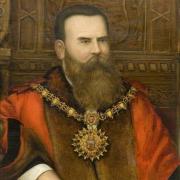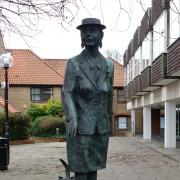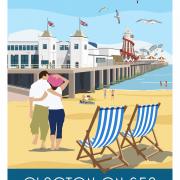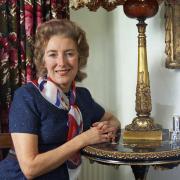Often found on lists of England’s greatest eccentrics, Sir Claude Champion de Crespigny was an adventurer, balloonist, boxer, horse racer... and hangman
At 8am on Monday February 8, 1886, the public executioner, James Berry, entered the condemned cell at Carlisle jail. Before him were three men convicted of the murder of a policeman. It was to be Berry’s first and only triple execution and to help in the grim task he brought an assistant – a man of about 40 calling himself Charles Maldon.
Berry pinioned two of the men while Maldon dealt with the third. The three walked resolutely to the gallows where they bade each other a final goodbye. Maldon and Berry pulled white hoods over their heads before the nooses were placed around their necks. Without further delay, a lever was pulled and the men dropped to their deaths.

And that might have been the end of the matter. But before the execution, Berry and Maldon had dined with the prison governor who concluded that Maldon’s polished behaviour marked him out as more than a mere assistant. Rumours spread of a mysterious upper-class hangman, and at a nearby hotel after the execution, the man was recognised by a journalist for who he really was.
‘Charles Maldon’ explained that it was possible that he might be appointed High Sheriff of Essex, and in that role, he would be called upon to organise the execution of those sentenced by the courts. He was not prepared to order anyone to do something he was not prepared to do himself, hence his appearance as assistant hangman at Carlisle. The truth was out. Maldon was in reality Sir Claude Champion de Crespigny of Champion Lodge, Great Totham.

Although de Crespigny was destined never to become High Sheriff, he did distinguish himself as one of the most extraordinary adventurers Essex has produced. He lived a long life dedicated to the maxim: ‘Where there is a daring deed to be done in the world an Englishman should leap to the front to accomplish it.’
Sir Claude was born in London in 1847, the eldest son of Sir Claude Champion de Crespigny, the third baronet who was a deputy lieutenant for Essex.
Young Claude joined the navy at 13. He later transferred to the army and was stationed in Ireland where he took up steeple chasing and became known as ‘The Mad Rider.’ On the death of his father, he inherited the baronetcy, and in 1870 left the army, briefly enlisting in a German cavalry regiment as a volunteer during the Franco-Prussian war. He managed to survive despite being arrested three times as a spy by the French on his way home.

He later settled at Great Totham and became a key figure in horse racing in Chelmsford, which at that time took place on Galleywood Common. He was a rider, steward, judge and member of the race committee for many years. He also laid out a steeplechase course at his home at Great Totham where he trained several horses. He rode winners on his 45th and 46th birthdays, and it wasn’t until 1914 when he was 67 that he rode his last race.
Riding at Lingfield Racecourse in 1893, he was kicked in the head during a fall. He suffered severe concussion and needed stitches, but three days later was out rolling the cricket pitch at his home and three days after that was back racing.
If steeple chasing wasn’t dangerous enough, he tried unsuccessfully to take part as a picador in a bullfight when visiting Havana. While accepting many people found bullfighting repellent, he harboured no such reservations himself, declaring in his memoirs: ‘There is no question whatever about the bull itself thoroughly enjoying the sport.’
He was also unsuccessful when he tried to persuade the famous French tightrope walker, Blondin, to take him up on the high wire.
In 1882, Sir Claude took up ballooning. His first plan – to cross the English Channel – proved disastrous. The launch site was a field in Maldon with the balloon filled from the nearby gas works. The pilot for the adventure was the Victorian ballooning pioneer, Joseph Simmons. The takeoff was badly handled with assistants hanging on to one side of the basket for too long causing it to crash into a wall. Sir Claude was thrown to the ground, suffering a broken leg, cracked ribs and concussion. Simmons managed to stay on board and later landed in a field near Arras in France.
Undaunted, a year later, Sir Claude was determined to try again. This time the take-off went smoothly and Sir Claude and Simmons found themselves floating away over Osea Island and gazing down on a man-of-war at Harwich. Two hours after takeoff they were at 10,000 feet and lost in cloud. They finally emerged over the coast of Holland and managed to land safely near the town of Flushing.
With this feat, Sir Claude and Simmons became the first to cross the North Sea by balloon. Simmons sadly was to prove just how many risks the early balloonists took. Five years later, he was killed in a crash-landing at Ulting near Hatfield Peverel.

Sir Claude was a keen boxer. He felt it was a strong indicator of character and when hiring male workers he would demand they spar a few rounds with him. He didn’t care if they won or lost, he merely wanted to see their ‘spirit’, as he put it. He also offered homeless people the opportunity to box him for a hot meal.
On one occasion, his friends dressed a professional boxer as a ‘tramp’ and made sure Sir Claude came across him. The ‘tramp’ gladly accepted the offer of a bout in exchange for food and duly thrashed his opponent. Sir Claude took his defeat in good part and, undeterred, continued offering his challenges.
Despite sitting as a magistrate in Witham, Sir Claude’s love of fisticuffs brought him before the courts on more than one occasion. In 1870, he was fined £5 for assaulting a waiter at a London hotel and in 1914 he was found guilty of assaulting a policeman at Bungay races. He was said to have hit the policeman around the head eight times after being prevented from crossing the course. Sir Claude vehemently denied the allegation – claiming he had struck no more than two or three blows! He was fined the maximum £20.
Sir Claude was a strong swimmer. When he was 15, he rescued a friend from the River Colne and he was awarded the Royal Humane Society medal for saving a soldier from drowning in Loch Lomond. In 1899, on a visit to Egypt, he became the first European to swim the narrowest and most dangerous part of the Nile rapids.
At the age of 61, he walked the 45 miles from his home in Great Totham to London to win a half-crown bet. In 1920 he challenged his cousin to a duel and was upset when it was rejected. He maintained that duelling was the proper way to obtain satisfaction.

He was also a fearless big game hunter and wrote to his local paper, The Essex Newsman, from Nairobi in 1905 saying that two man-eating lions were creating panic in a district 200 miles away, and he and his son were ‘just off to see if we cannot add their jackets to our collection.’
In 1872, Sir Claude married Georgiana McKerrell. They became soulmates, and she proved as daring and fearless as her husband. They both enjoyed swimming in the sea well into their eighties. Her death in 1935 was a final blow he couldn’t withstand. After a life lived on the edge, he died peacefully in his sleep at home in Great Totham a few months later at the age of 88.


























